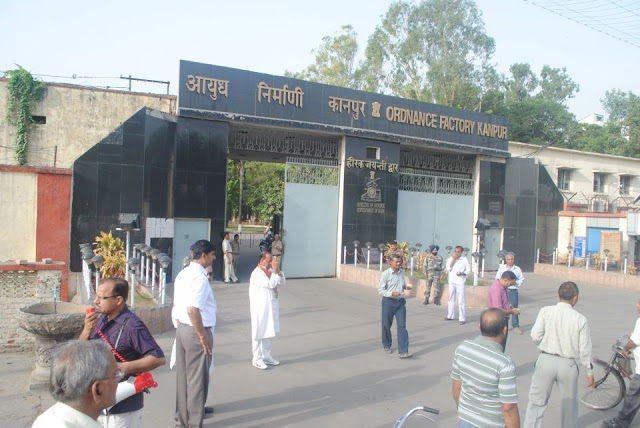In the past few weeks, major developments regarding the Indian defence Industry have emerged. These developments have made it abundantly clear that the time has arrived to either Reform or Replace India’s main Defence production agency. I am talking about the Ordnance Factory Board (OFB).
1st The country’s premier auditing agency CAG has pulled up OFB for “overstating its performance.” The report also stated that despite persistent audit observations, neither the Ordnance Factory Board nor the Principal Controller of Factories, Kolkata, took steps to curb this incorrect practice.
2nd Government of India in all its wisdom has decided to squash the level playing concept in defence Industry created under the ‘Make in India’ campaign. Government has achieved this milestone by directly nominating the government-owned Ordnance Factories Board (OFB) as one of the three companies to undertake design and development of Fighting Infantry Combat Vehicle (FICV).
Lastly, soldiers of one of the world’s largest army have been buying their own boots & uniforms all this time with their own money. According to one report by economic times “The Ordnance Factory Board issues Boots & Uniforms every 18 months, but they only last 3-4 months.” Boots & Uniforms issued by the OFB also face the problem of awkward sizing and colour mismatches.
Issues stated above show the urgent need to reform the massive public behemoth that is Ordnance Factory Board. It is saddening to see that a country which produces nuclear-powered submarines (SSN), indigenously developed Inter-Continental Ballistic Missiles (ICBMs) and Aircraft carriers cannot provide its soldiers with basic necessities such as Combat Boots & Bullet proof jackets. The main reason for this situation is the complete lack of competition in the Indian Defence Industry, though it is beginning to change now, and massive corruption which exists within the Ordnance Factory Board. OFB is also responsible for turning state of the art systems into poorly manufactured products, one such famous example is the case of INSAS. INSAS was designed to be a simple gun which was perfect for the army in the 90s, however due to poor quality manufacturing by OFB, a great design was turned into a poorly executed project which the end user was hesitant to use. It should also be noted that these defects were rectified in the subsequent versions of the weapon.
Due to the famous ‘Chalta hai’ attitude of Ordnance Factory Board precious TOT (Transfer of Technology) is wasted. A famous example of this the Bofors deal of the 1980s, the 12,000 Pages of TOT provided by the Swedish giant AB Bofors should have insured that within a few years’ time OFB with cooperation of DRDO comes up with an Indian artillery gun & it’s subsequent modified versions, yet it took more than 2 decades to come up with a modified gun based on the TOT provided by AB Bofors.
Time has arrived for the Government and the Defence Ministry to fix this situation either by reforming Ordnance Factory Board or replacing it by similar counterparts in the Defence sector. Efforts should be made to concentrate the Public sector’s technological might into development of only strategic weapon systems and leave the Development and Production of Non-Strategic weapon systems, like Combat boots and uniforms, to the private sector. Indian establishment must realize that the Indian industry has come of age and can actively participate in production of defence products. Many Indian companies now have the ability to produce world class defence products for the Indian military and already export their products to foreign armies, the best example to show the technological might of the Indian Private sector in defence manufacturing a little known company MKU.
MKU produces Helmets, Bullet proof jackets, Night Vision Devices and armour solutions for a wide variety of Platforms. The company exports its products 100 countries around the world & is a registered supplier to UN & NATO forces.
Another shining example of Private sectors expertise in Defence Manufacturing can be ‘TATA’, the company which had no previous experience in armoured cars came up with a prototype within a very short time by cooperating with DRDO. TATA Kestrel which is TATA’s bid for the FICV project is a perfect example of what happens when you combine the best practises of Private and Public Sector. Many other Indian Pvt companies are doing good work in Defence sector too, L&T has been involved in the Hull Fabrication of India’s 1st nuclear Submarine & Godrej makes components for Brahmos Missile.
India has a very troubled neighbourhood and cannot afford to have any chinks in its armour. Defence preparedness of the country cannot be maintained till the frontline soldiers don’t have proper equipment like boots and uniforms. Indian can develop a world class Military Industrial complex only when it reforms the Public sector and gives a greater role to Private sector in Defence Production.
